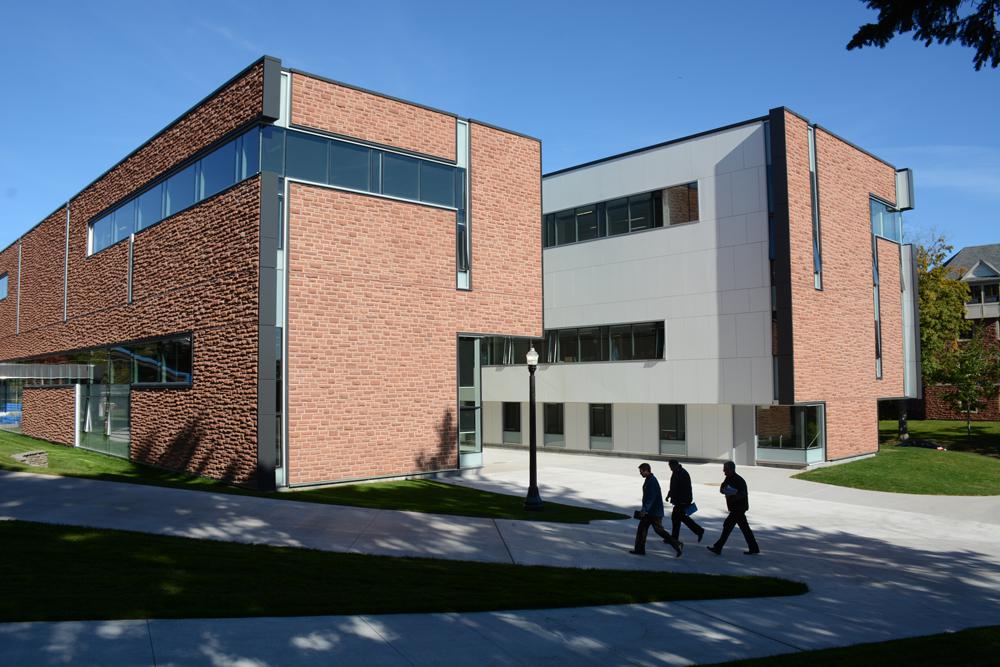Mount Allison University in Sackville, New Brunswick, may be small compared to a lot of other universities in Canada—and its art department is even smaller.
Overall, the school has just 2,500 students, while the art department accepts 24 new students per year.
But with its new Purdy Crawford Centre for the Arts opened on Friday, Mount A. is hoping to set a standard for how better art-education facilities can be designed in future.
“I would say we moved into a $30-million artwork,” says photographer Thaddeus Holownia, head of the university’s department of fine arts.
Holownia explains that artist collaboration with the building’s designers, Toronto’s Zeidler Partnership Architects, is what sets the building apart.
Everything from the size and placement of the building’s windows—something vital for making ideal drawing and painting studios—to the modes of display for critique rooms (magnetic boards rather than pushpin arrays, which can damage student artworks) was decided in consultation with the fine arts faculty, rather than by the architects alone.
“Quite often in any building project, the people who are administrating it tend to think the less people involved after the initial planning stage, the easier it is to manage,” Holownia says. But “in this case the entire department sat around the table through the entire process to determine what each area would have to do.”
One result is that the photo studios have maintained the same amount of analog darkrooms as previously existed, but expanded the digital component with a larger lab and a digital Chromira printing machine that is rare in art schools of smaller size.
And as for the old Mount A. visual arts building, originally opened in 1965 and now emptied and awaiting a decision by the university, Holownia has little nostalgia.
“If you came here and saw what we were working in before…you wouldn’t ask that question [about whether we miss the old building],” Holownia says.
Previously, only painting, drawing and printmaking could fit in the original fine arts building, while sculpture, photography and the fourth-year studios were all in different buildings on campus. Faculty offices were also scattered.
So even in its first few days, Holownia argues, the building has “already had a huge impact.”
Fiscally, the university is also proud that the $30-million, 50,000-square foot building (which also includes the school’s theatre education facilities) was funded primarily through private donations, with no direct government funding or external debt taken on by the university.
In celebration of the new building, an exhibition of 50 works by seven decades of alumni is taking place in the centre’s atrium until October 9. Exhibiting artists include Maritime realist Tom Forrestall (class of 1958), artist/critic Lucy Hogg (class of 1979), Newfoundland-based creator Will Gill (class of 1991) and recent Canadian Forces War Artist Program participant Maskull Lasserre (class of 2001), among others.

 The new Purdy Crawford Centre for the Arts at Mount Allison University.
The new Purdy Crawford Centre for the Arts at Mount Allison University.







